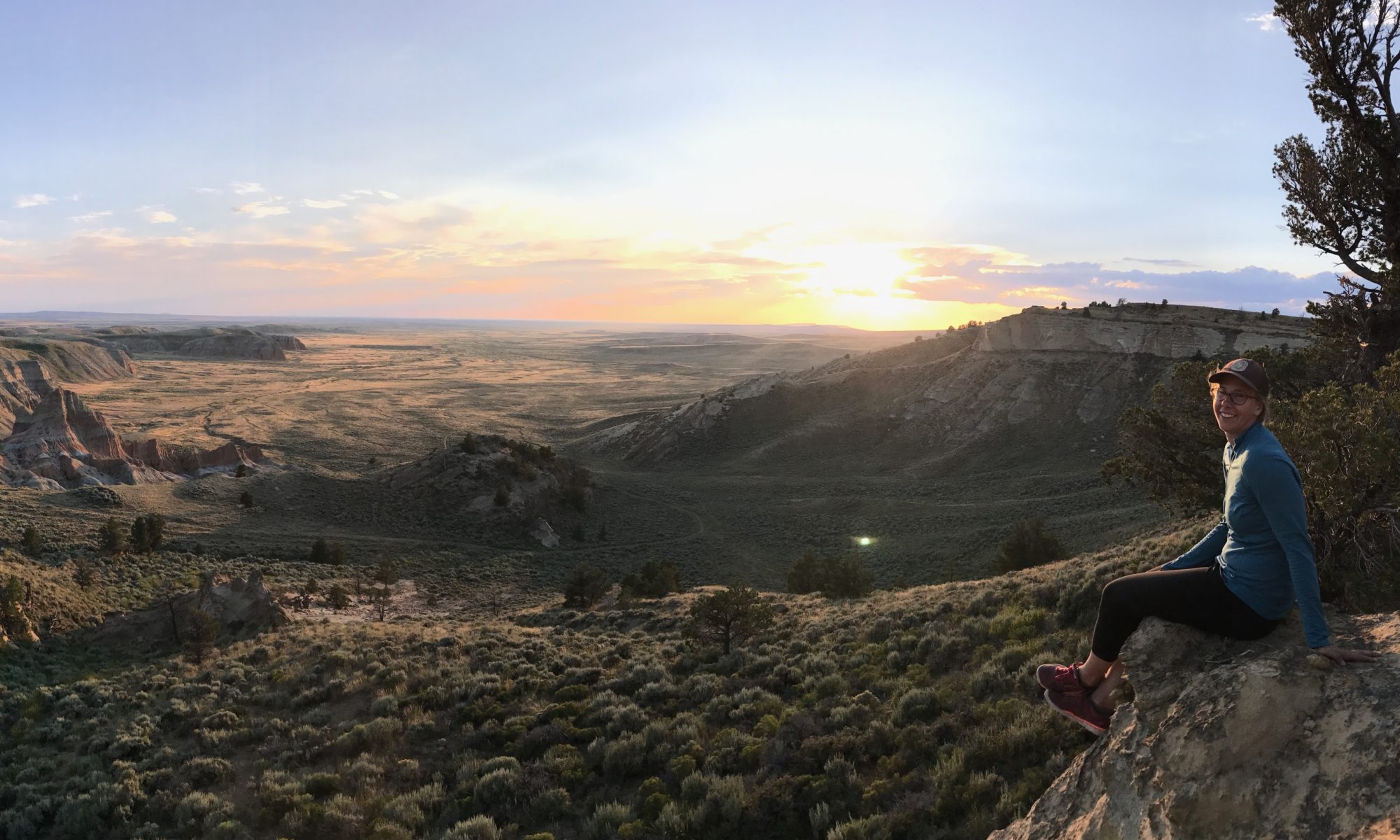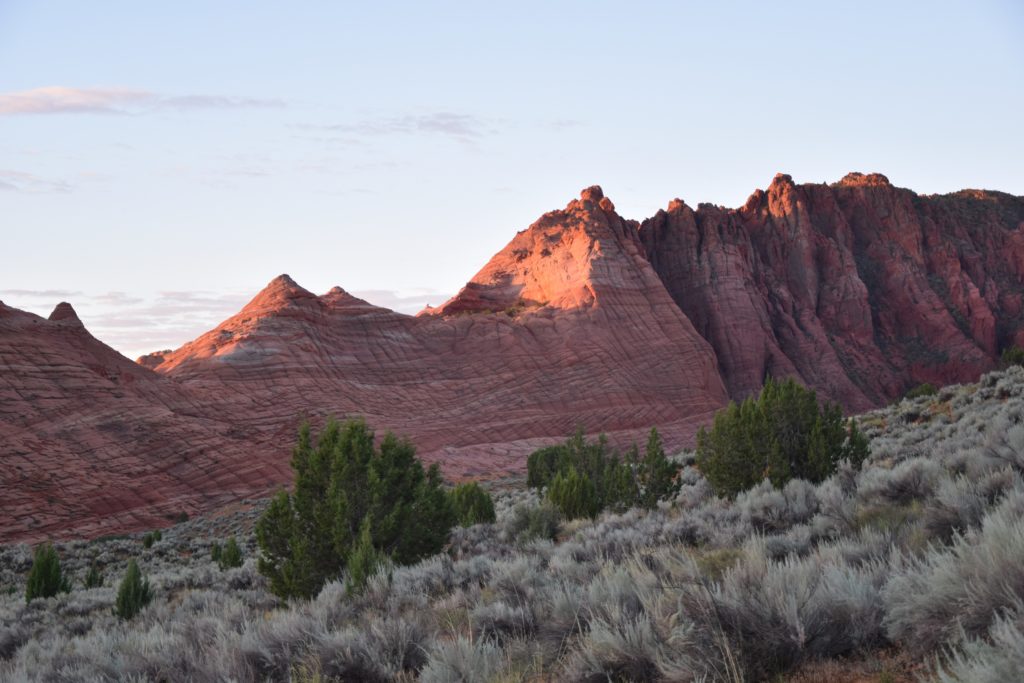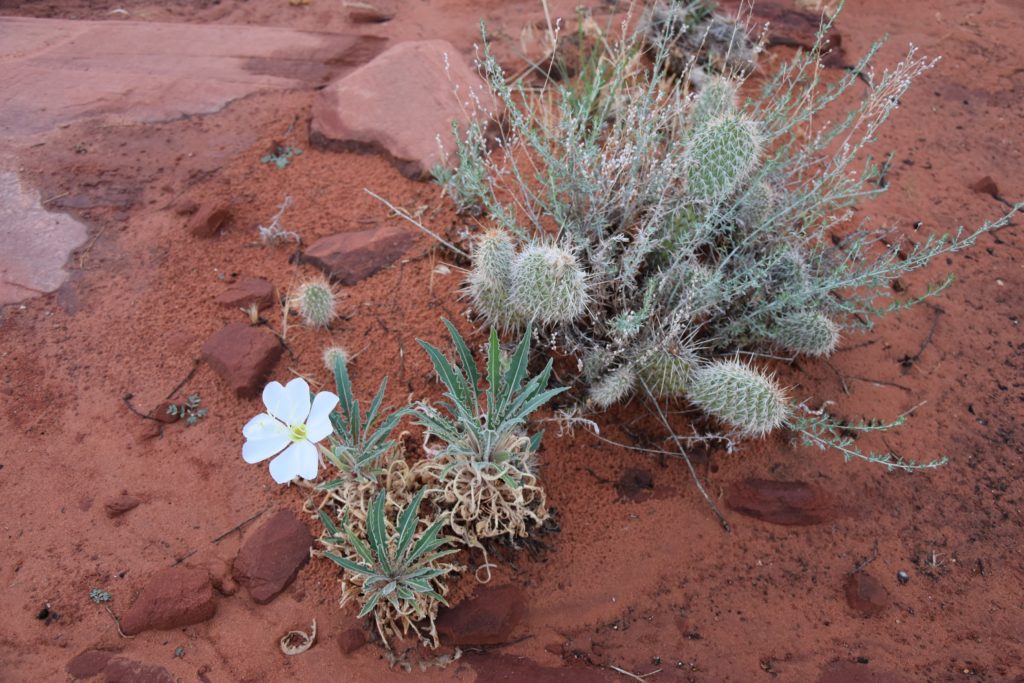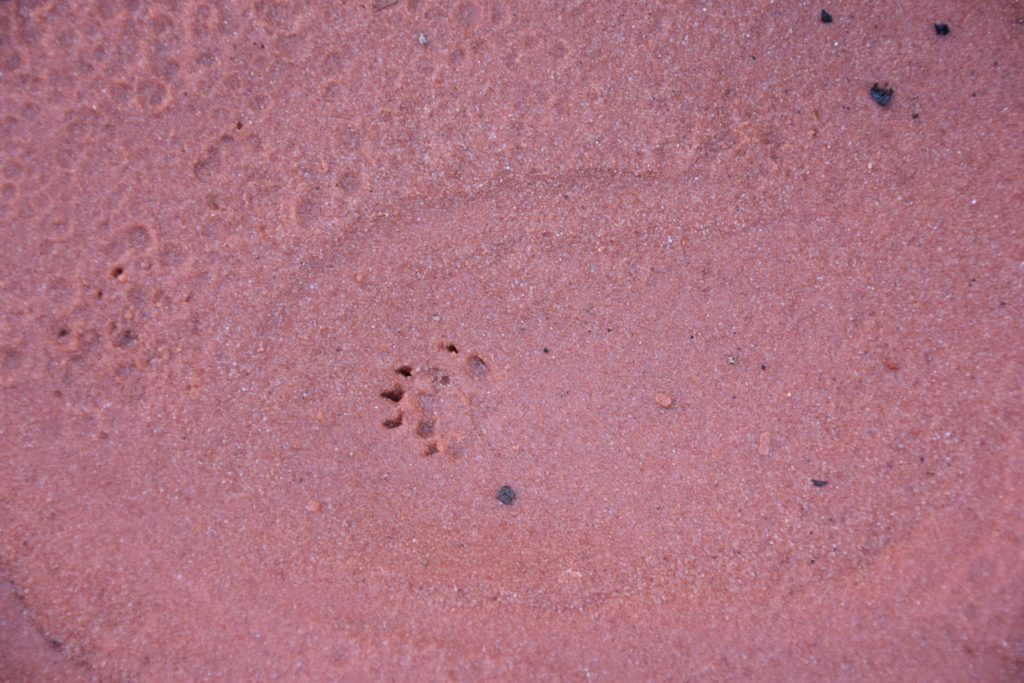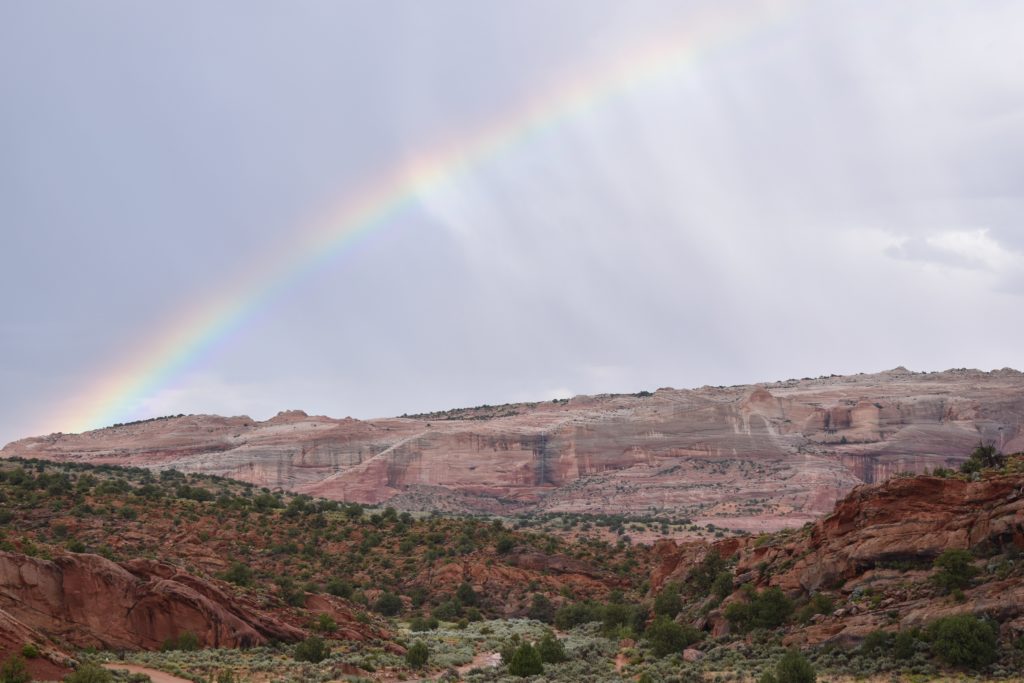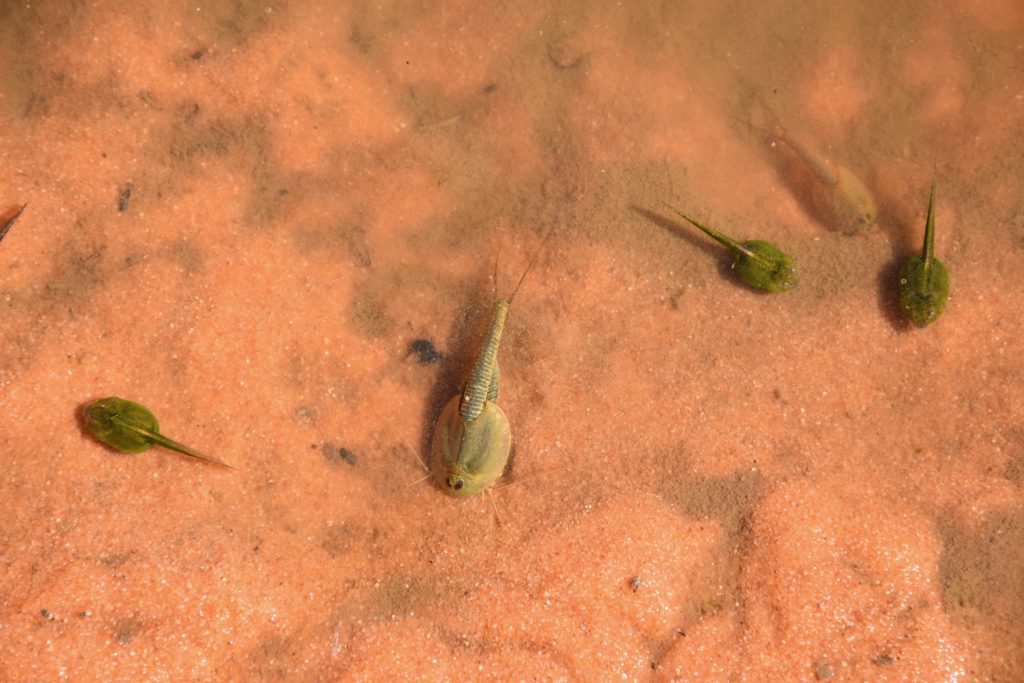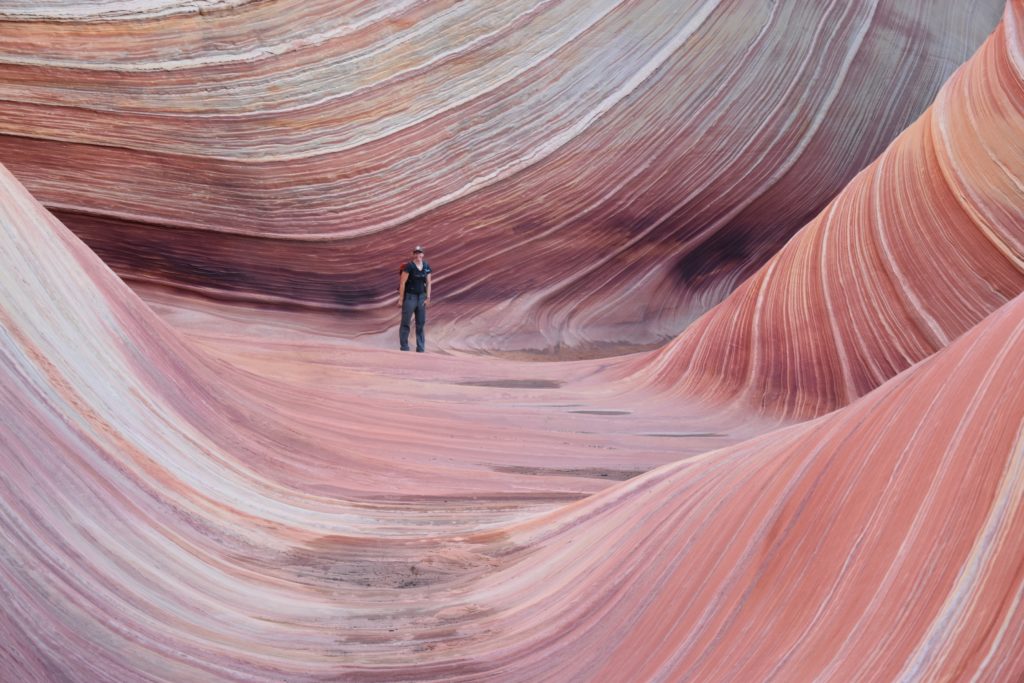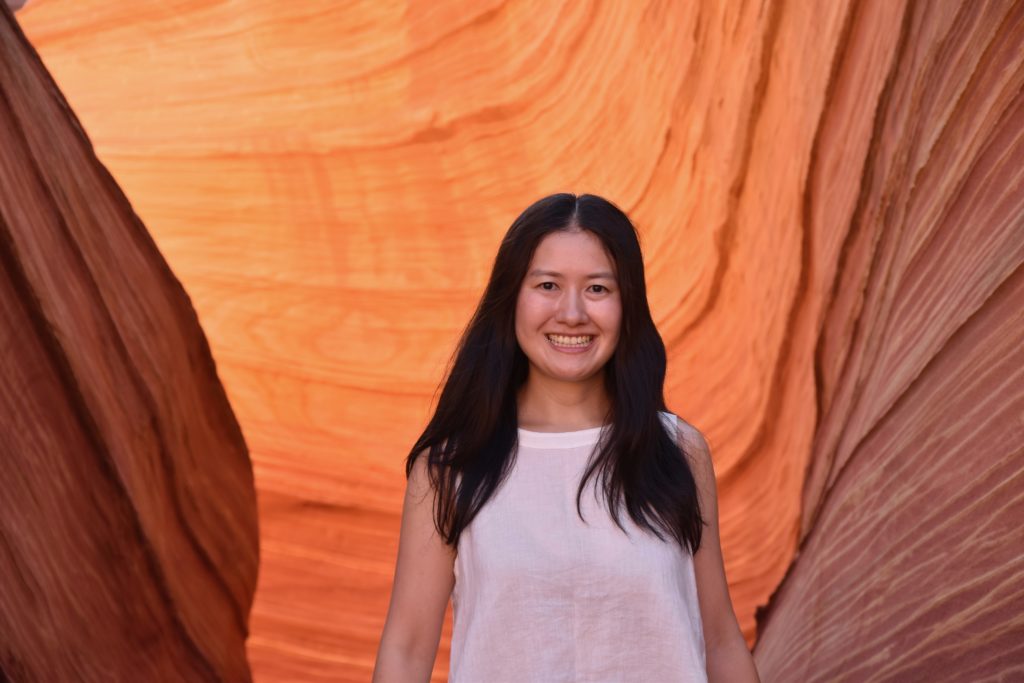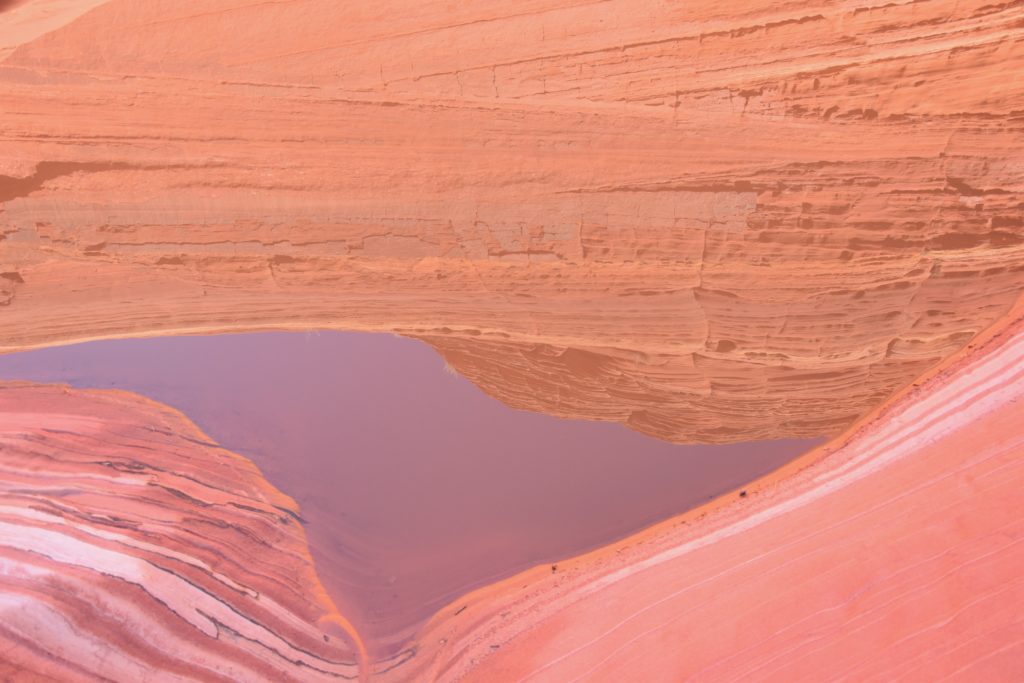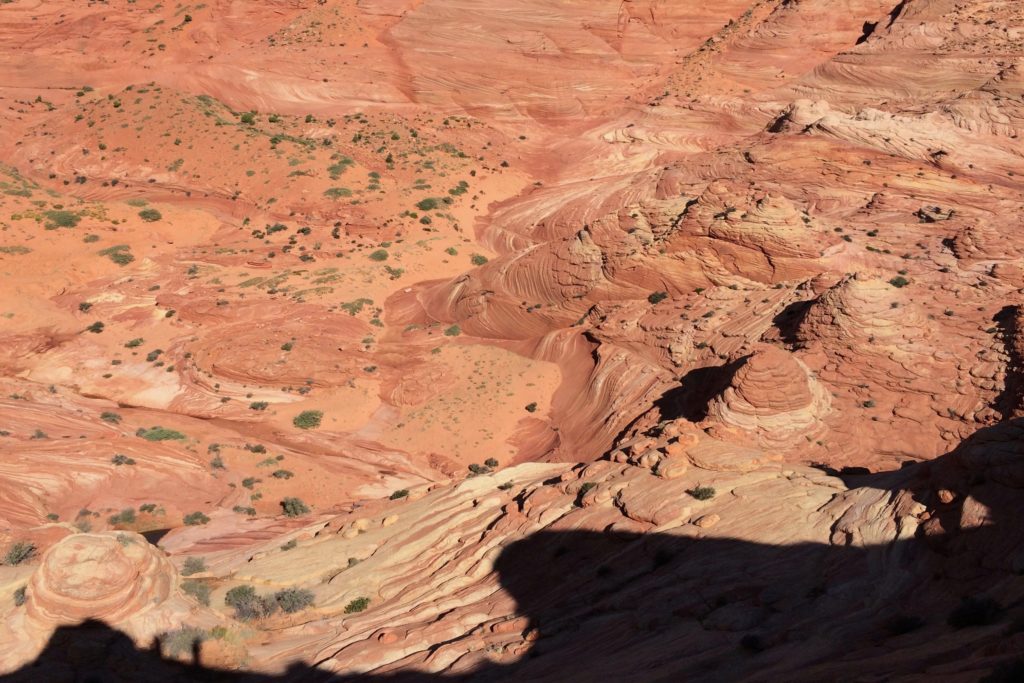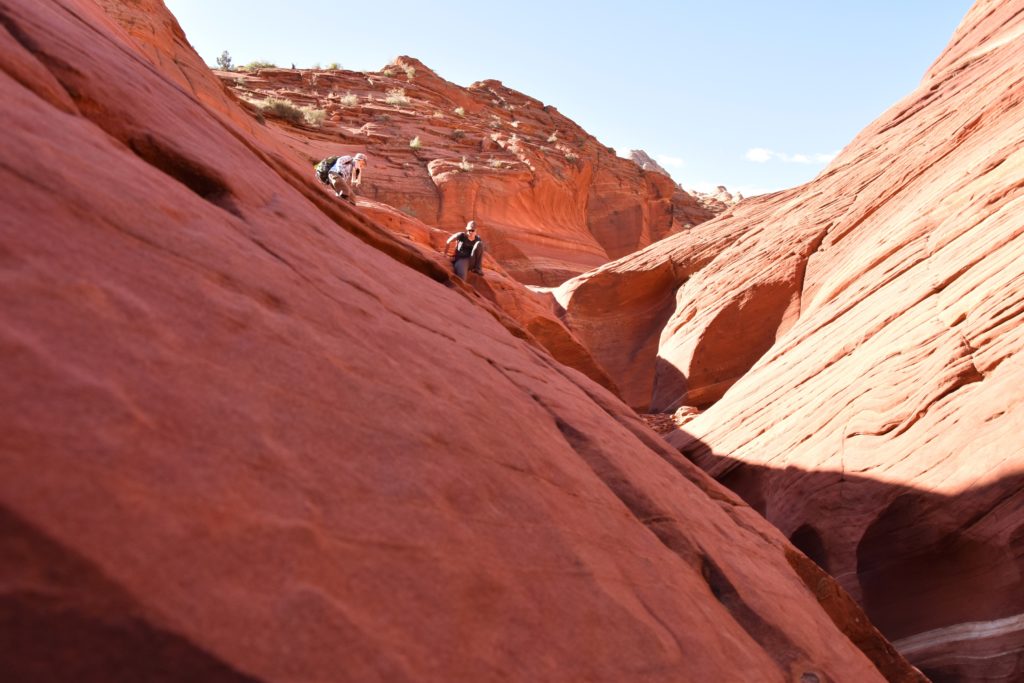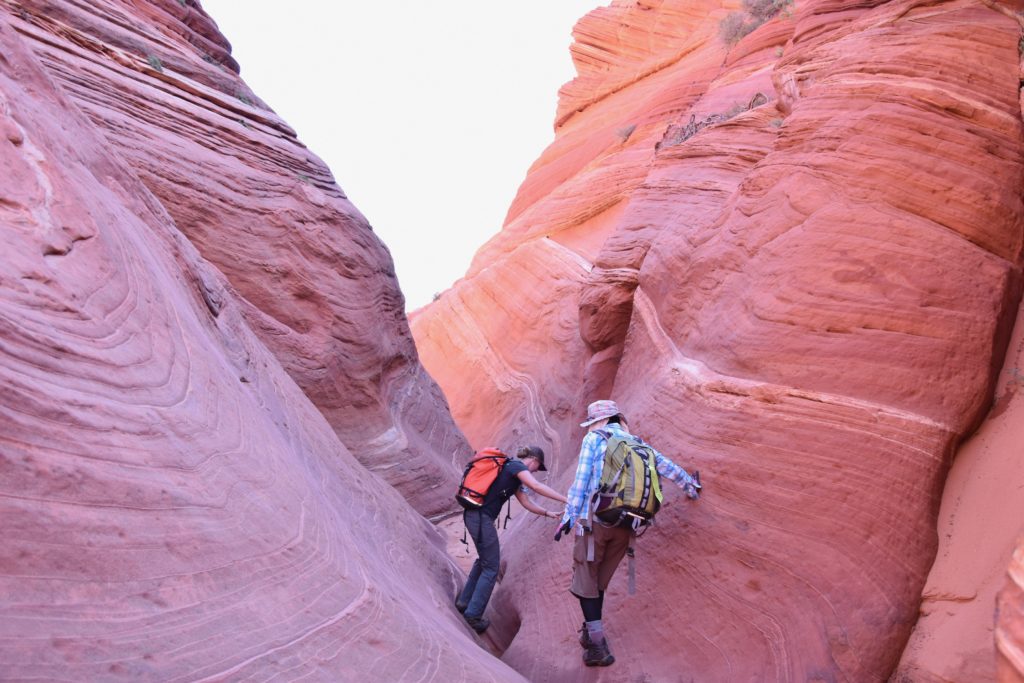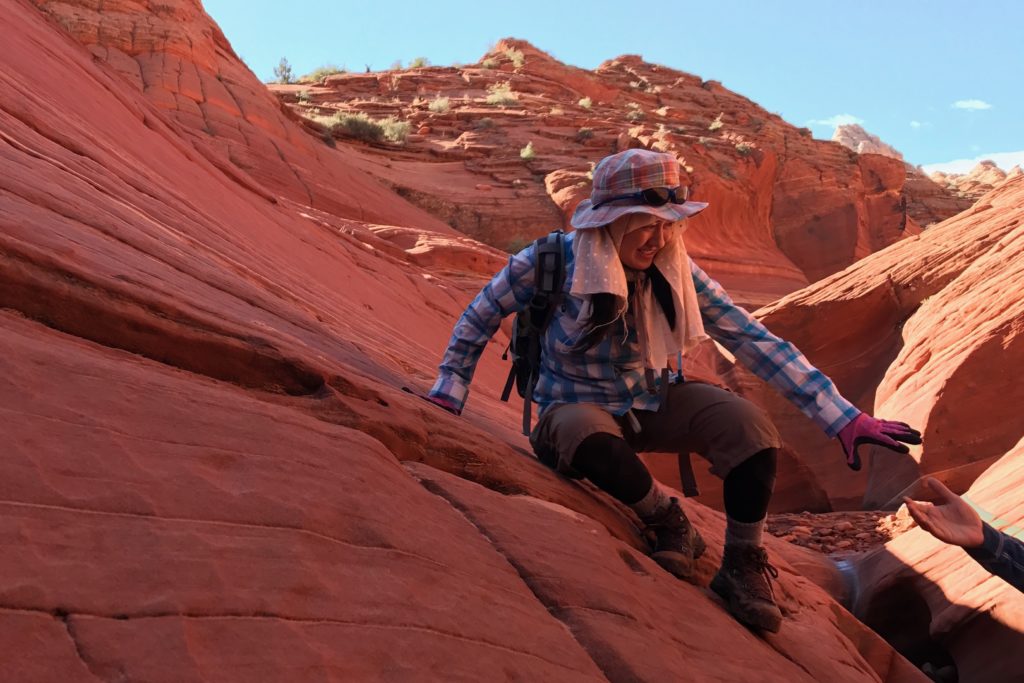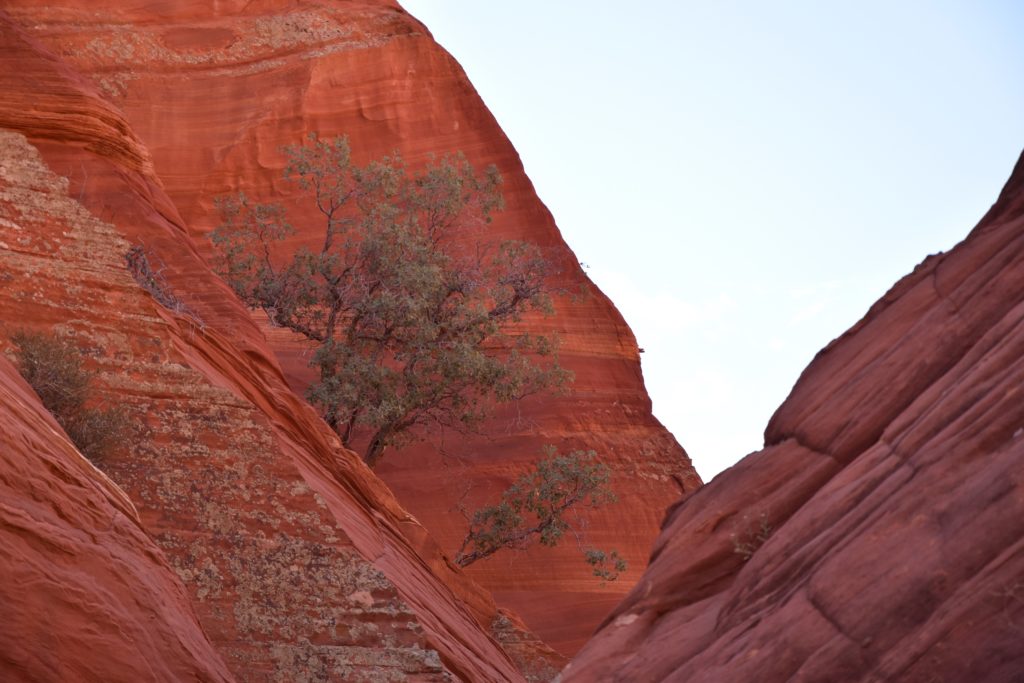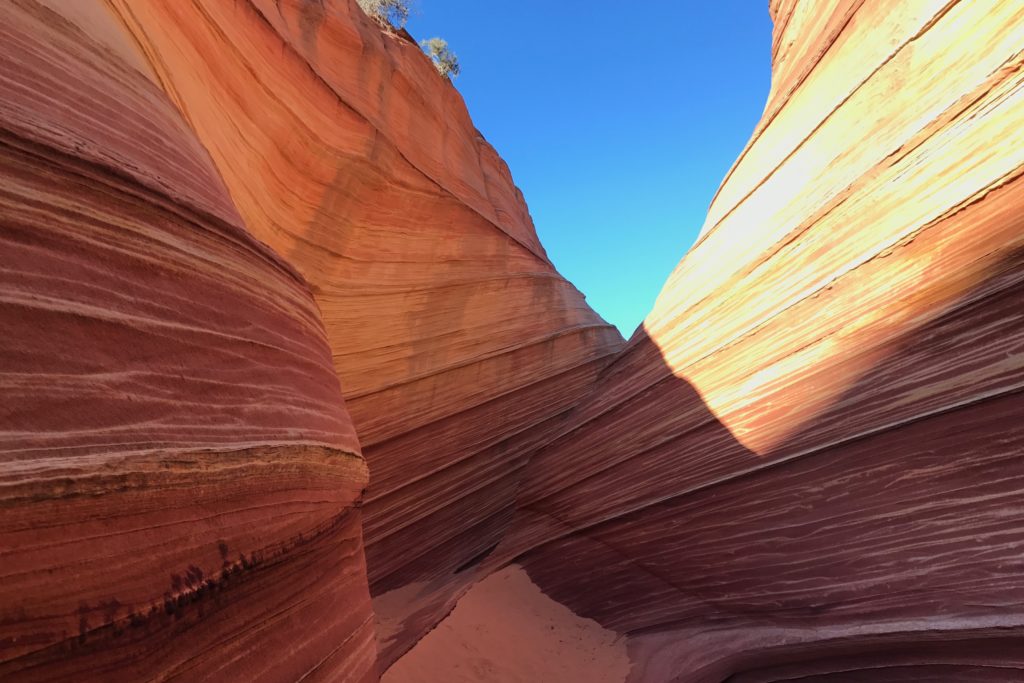
Protected in 2000, the monument houses a geologic wonderland of erosional formations—
sheer cliffs, slot canyons, vibrantly colored yellow-red-orange-purple sandstone dunes, rock outcroppings, mesas and tablelands. It’s a remote and seemingly unspoiled area, and home to many sensitive species of plants and animals. The monument is also home to over twenty species of raptors, and, after being reintroduced in 1996 by the Peregrine Fund, California Condors!
(As an aside, we learned that the condors (and other birds of prey) in the area still face challenges, including lead poisoning from eating carcasses of animals killed with lead ammunition. There’s an easy alternative—copper bullets—and the Obama administration had implemented a policy banning the use of lead ammunition and fishing tackle on wildlife refuges. Unfortunately, Interior Secretary Zinke overturned the ban on his first day in office.)
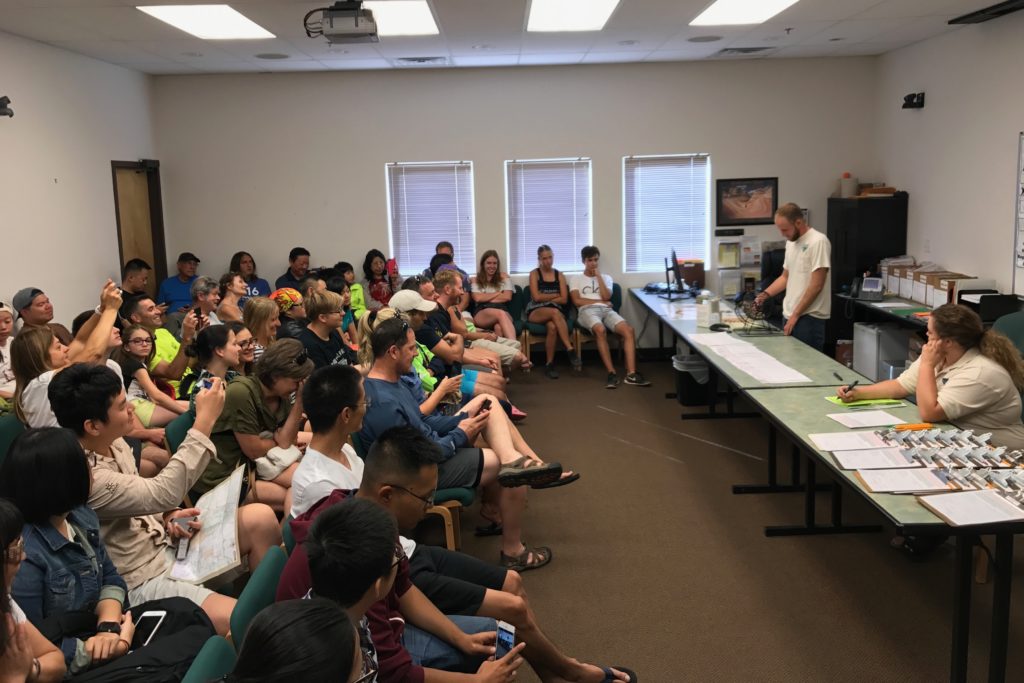
Perhaps the most famous feature of Vermilion Cliffs is the Wave. The area is so popular that the BLM hands out permits for just 20 individuals to visit each day. There are 10 permits handed out in an on-line lottery and 10 permits handed out in-person the day before at the BLM field office in Kanab. We decided to try our luck and showed up bright and early at the put our name in for a permit. The day we showed up, there were 96 other people vying for Wave permits. It was a fully international crowd and despite the tension, was quite festive. They literally pick numbers out like a lottery. Somehow our number was picked and we scored a permit to visit the Wave the next day! Even if we hadn’t, though, we would have had no shortage of jaw-dropping wildness to experience; as the BLM ranger said, you have already won the lottery just by being there.
We woke up before sunrise to start our hike, both to beat the heat and to experience the morning colors and rhythms of the desert. When we got to the trailhead, Yoko, a Japanese woman from Tokyo was already there. We invited her to join us and we headed off across the desert in the barely-there morning light.
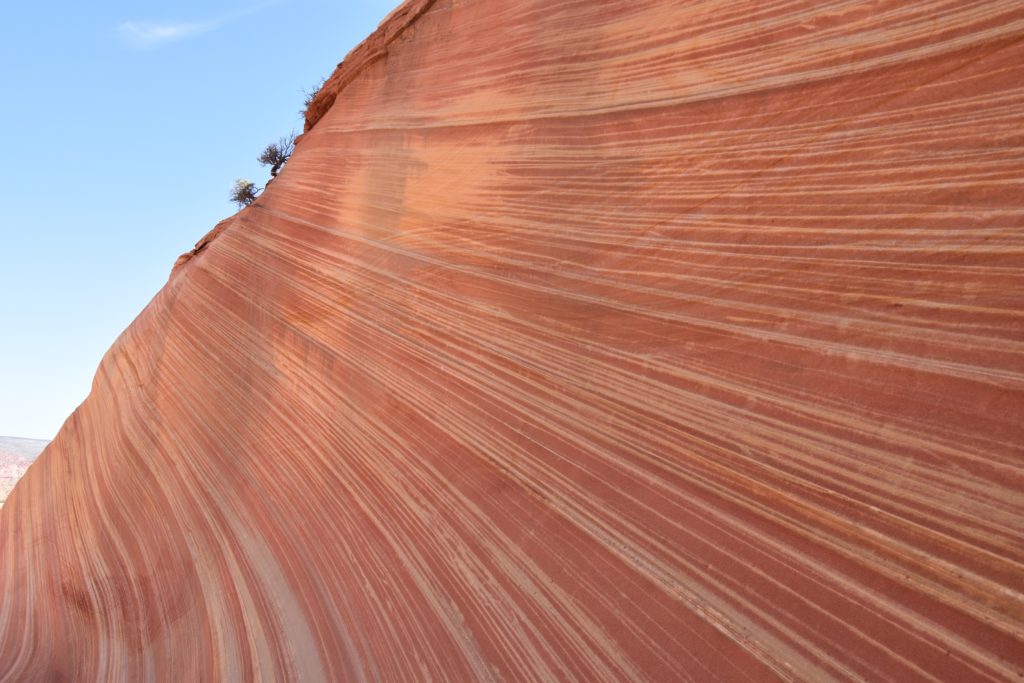
The Wave actually is incredible. Lines of color etched into rock, swirling and pulsating, creating a rhythm of color and texture. We spent over an hour clambering around on the rock, looking at the phenomenon from every perspective.
With the Wave securely etched in our consciousness, we decided to explore further, and hiked to “The Second Wave” and then to the “Swirls.” From the Swirls, we followed a canyon back to the entry point for the Wave. The canyon was super narrow in spots, and Sam kindly gave rides to Yoko and me through puddles. We headed back to the Wave for one final viewing. More people had arrived in the interim and it was their turn to sit in awe of sandscape.
While we were hiking the Wave we meet people from Japan, Canada, France, Puerto Rico (that group had been trying for three years to get a permit!), Denmark and New Hampshire, and this doesn’t account for the other 88 people that showed up for the daily permit lottery, most of whom seemed to be from overseas. That’s a jaw-dropping number of international people in a remote section of Utah and Arizona, and they are there because of our amazing, unique and irreplaceable public lands.
Vermilion Cliffs’ fate remains up in the air. There may be uranium deposits beneath the monument, and pro-mining groups continue to pressure the administration to reduce or remove protections to open up mineral development. This short-term gain (money) for a few would be at the expense of the long-term gain (beauty, wildness, solitude, ecology, history) for us all.
